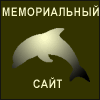| |
supersunt. Diog. Laert. — Diogeni Laertii Vitae
philosophorum. Dioni Chris. Or. — Dioni Chrisostomi Orationes. Eos. — Eos.
Commentarii societatis philologiae Polonorum. Wroclaw. Eph. fr. — Ephori
fragmenta. Ex. — Exodus (Biblia Hebraica). Ez. — Ezechiel (Biblia Hebraica).
E. gr. Hist. — Die Fragmente der griechischen Hisloriker, FHG — Fragmenta
Historiconim Graecorutn. Gen. — Genesis (Biblia Hebraica). GGM — Geographi
Graeci minores.
Hannoni periplus — Hannoni Carthaginiensium regis periplus. Her. — Herodoti
Historiarum lihri IX. Hier. Ep. — Hieronymi Epistulae. Horn. U. — Homed Ilia's.
I El'CO App. — Le iscrizioni fenicie e puniche delle colonie in Occidente.
Appendice. I El'CO Malta — Le iscrizioni fenicie e puniche delle colonie in
Occidente. Malta. IKPCO Sard. — Le iscrizioni fenicie e puniche delle colonie
in Occidente. Sardegna. IFPCO Sard. Npu — Le iscrizioni fenicie e puniche delle
colonie in Occidente.
Sardegna. Iscrizioni neopuniche. IFPCO Sic. — Le iscrizioni fenicie e puniche
delle colonie in Occidente. Sicilia. IFPCO Spa. Le iscrizioni fenicie e puniche
delle colonie in Occidente. Spagna. Ies. — Iesaia (Biblia Hebraica). 1G —
Inscriptiones Graecae.
los. Ant. lud. — Iosephi Flavii Antiquitat.es ludaicae. los. Contra App. —
Iosephi Flavii Contra Appionein. Iraq — Iraq Journal of British Archaeology. L.
Iuba fr. — Iubae Mauritani fragmenta. lud. — Iudices (Biblia Hebraica). lul. Or.
— luliani Orationes.
lust. — M. Iuniani lustini Trogi Pompei Historiarum Philippicamm epitoma. Jor.
— Joremia (Biblia Hebraica). JHS — The Journal of Hellenic Studies. L. KAI —
Kannaanaische und aramaische Inschriften. Liv. — Titi Livii ab urbe condita
libri. Liv. per. — Titi Livii ab urbe condita libri; periochae. Luc. de dea
Syra — Lnciani Samosatensis de dea Syra. Lyd. de mens. — lohanni Lydi de
rnensibus. Macroh. Saturn. — Amhrosii Theodosii Macrobii Saturnalia. Marc. Her.
Ep. per. Men. — Marciani Heracleensis ex Ponto Epitome peripli
Menippei.
Mela — Pomponii Melae de chorographia libri tres.
MM — Madrider Mitteilurtgen. Madrid.
Nav. — lesus Navinus (Biblia Hebraica).
Nep. Ham. — Cornelii Nepotis Vita Hatnilcaris.
Nop. Hannib. — Cornelii Nepotis Vita Hannibalis.
Oros. — Pauli Orosii Historiae adversus paganos.
Pans. — Pausanii Graeciae descriptio.
Phil. — PhiloTiis Byblii fragmenta.
Pind. I Pyth. - Pindari 1 Pythia.
Plat. leg. — Platonis leges.
Plaul. Casina — T. Maccaei 1'lauti Casina.
Plant. Poen. — T. Maccaei Plauti Poenulus. 255
Chapter V, Religion. In the centre of the Carthaginian pantheon were healing
gods, the patron of Carthage was Eshmun whose temple was in the very
city-centre. Tinnit started to become prominent since the mid-5th с . В . С .
Her ciild^. had existed even earlier, but ever since that time she moved to the
foreground in connection with social and economic and political changes in
Punic society. The other major god was Ba'al-Hammon. Other cults are also
considered, all the cults are given in evolution. A survey is given of the
temples, priesthood. rituals, sacrificial practice, cults of the dead and
burials.
Chapter VI, Sciences, starts with the features of the Carthaginian version of
the Phoenician language. Punic ami neo-Pnnie. arts of writing are analysed.
Further, the chapter proceeds to historiography, geography, agronomy, and
philosophy. The available chronology shows that Carthaginian science started to
evolve in the 4th с . В . С .
Chapter VII, Arts. Two stages in the history of Carthaginian art are
distinguished, with the 4th с . В . С . being their borderline. Three trends
are distinguished in 4th-2nd ее . В . С art: Graeco-Hunic, Graecizing and
Traditional.
Conclusion sums up the hook. Carthage's history is divided into four periods:
9th —early 7th cc. B. C: early 7th —mid-5th cc; mid-5th с — 201 В . С ., and
201 — 146 В . С . The second stage was of special significance as it was the
time when the forming of the Carthaginian power took place, on the one hand.
and of its social and political system, on the other. The resvilt was the
evoWement of the Carthaginian polis. The third stage is that of the evolving
ideological superstructure subjected to a strong Greek influence. At that time,
Hellinistic-type structures began to appear inside Carthaginian society and
state. The fourth stage saw the crisis of the Carthaginian polis finalized by
the Roman capture. The history of Carthage shows the development of an Oriental
city into an antique state, producing an original culture incorporating eastern,
western and antique influences.
УКАЗАТЕЛЬ ИМЕН
Абдастарт 235
Абдис 163
Абдмелькарт, имя 132, 133, 157
Абдмелькарт, жрец и суффет 175
Абдмилар 131
Абдосир 167
Абдтиннит 150, 153
Абдтишшт 153, см. Афетенну
Абдшемеш 153, 162
Абдэшмун 133, 137
Августин 149, 177, 215, 251
Лвиен (Руф Фест Авион) 53, 208 Авраам, мифолог. 179, 181 Аврелиан 125 Лгафокл
29, 50, 61-64, 75, 90, 98,
104, 117, 118, 125, 135, J58, 181,
182, 200, 212, 245, 252 Адонибаал 135 Лдонибаал, суффет 134 Аэемилк 136
Аэрубаал, ими.
|
|




